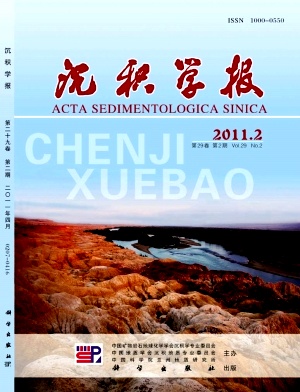Distribution and Evolution of Sedimentary Facies of the Middle of the Third Member of Shahejie Formation, Paleogene System in Minfeng Subsag, Jiyang Depression
- Received Date: 1900-01-01
- Rev Recd Date: 1900-01-01
- Publish Date: 2011-04-10
-
Key words:
- Minfeng subsag /
- Yong’anzhen delta /
- Dongying delta /
- depositional system /
- transformation of accommodation space
Abstract: Minfeng subsag lies in the southeast of Jiyang Depression, and has super oilgenerative and depositional conditions. At present, the degree of lithologic hydrocarbon reservoir exploration is low, so the exploration potential is great. Delta, fan delta and near shore subaqueous fan depositional systems can be found in this area according to the research of seismic, logs and core. Distribution and interaction of depositional systems has been researched based on the identification and analysis of sedimentary feature in the middle of the third Member of Shahejie Formation, Paleogene System (Es3) in Minfeng subsag, using single factor analysis and multifactor comprehensive mapping method. Delta depositional system is the most important one, which can cover the most part of the subsag, including Yong'anzhen delta and a part of Dongying delta. It mainly contains delta front and foredelta subfacies, and the main rocks are in the fine sandstone, siltstone, and dark mudstone, etc. Underwater distributary channel facies visible trough cross bedding, wedgeshaped cross bedding, wavy bedding and washingfilling sedimentary structure. Lithology cycles generally show the upward fining cycles, logging curve shapes are the bellshaped and boxshaped. In distributary stream mouth bar, the sandstone are sorted well and tabular crossbedding, wavy bedding and bimodal crossbedding can be found. Lithology cycles generally show the backward fining cycles, logging curve shapes are the funnelshaped or dentelated funnelshaped. In distributary bay, horizontal beddings and lenticular beddings are the most popular sedimentary structure, also, wavegenerated ripples, shell deposition and phytoclasts can be found. The slump turbidity sandstone interlining in the thin mudstone can be found in foredelta subfacies. There are some typical deformation structure and liquefaction structure in the core and fingershaped and bayonetshaped in the log curves. The delta can be divided into 6 units which means 6 depositional phases according to the lithological changes in the single well and the forward characters of events in the seismic profiles. Three of them on the top partly omission in the east of the subsag. The fan delta and near shore subaqueous fan only deposited in the north of subsag closed to Chenjiazhuang uplift during earlier stage of Es3. Looking at the sedimentary evolution from building several profiles in different location, we can found a typical phenomenal that the forward and backward occurred in the same time sometimes. There are three different types: in the early stage, delta in the south continually forward while the near shore subaqueous fan in the north backward; in the middle stage, one lobe of Yong'anzhen delta's forward while another backward; in the latter stage, the Yong'anzhen delta forward to the south while the Dongying delta backward to the south. These can be summarized into three kinds of transformation of accommodation space according to the genesis: ① the transformation of accommodation space caused by tectonic movement between two different sedimentary systems in different structure layers; ② the transformation of accommodation space caused by deposition between two different sedimentary systems in same structure layer; ③ the transformation of accommodation space caused by deposition between two different parts of a sedimentary system in same structure layer.
| Citation: | ZHAO Wei. Distribution and Evolution of Sedimentary Facies of the Middle of the Third Member of Shahejie Formation, Paleogene System in Minfeng Subsag, Jiyang Depression[J]. Acta Sedimentologica Sinica, 2011, 29(2): 255-267. |






 DownLoad:
DownLoad: